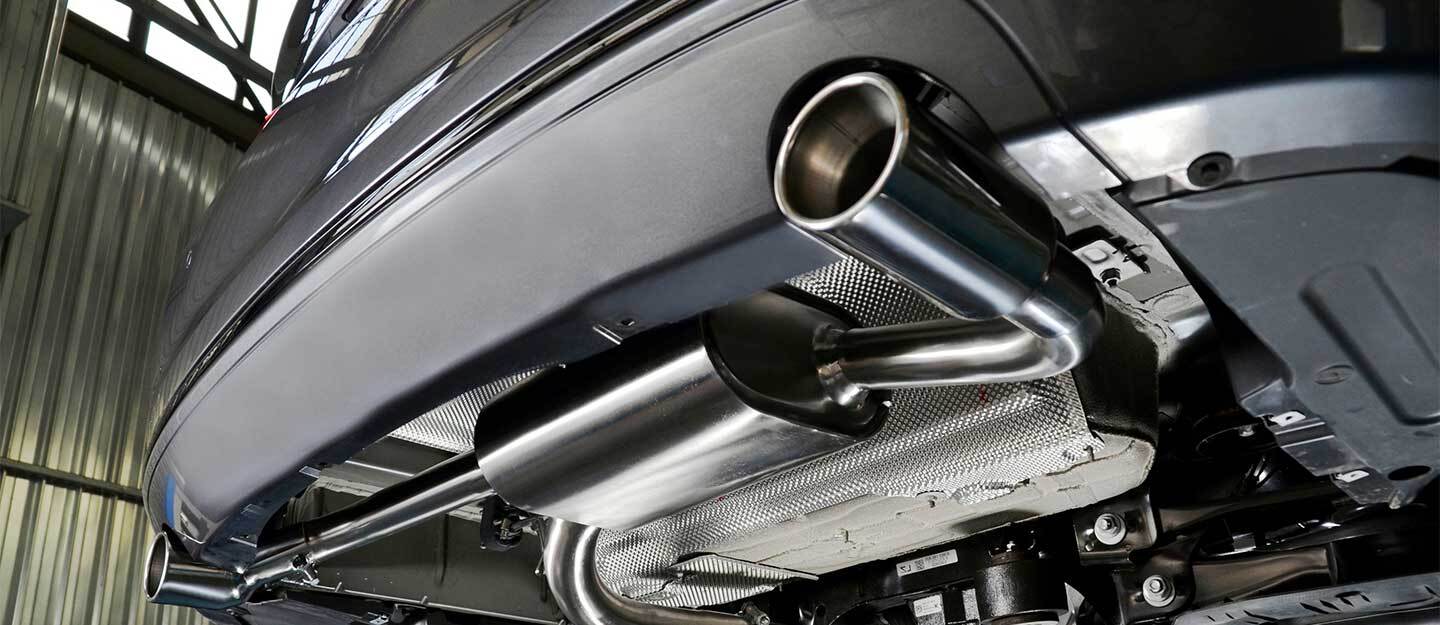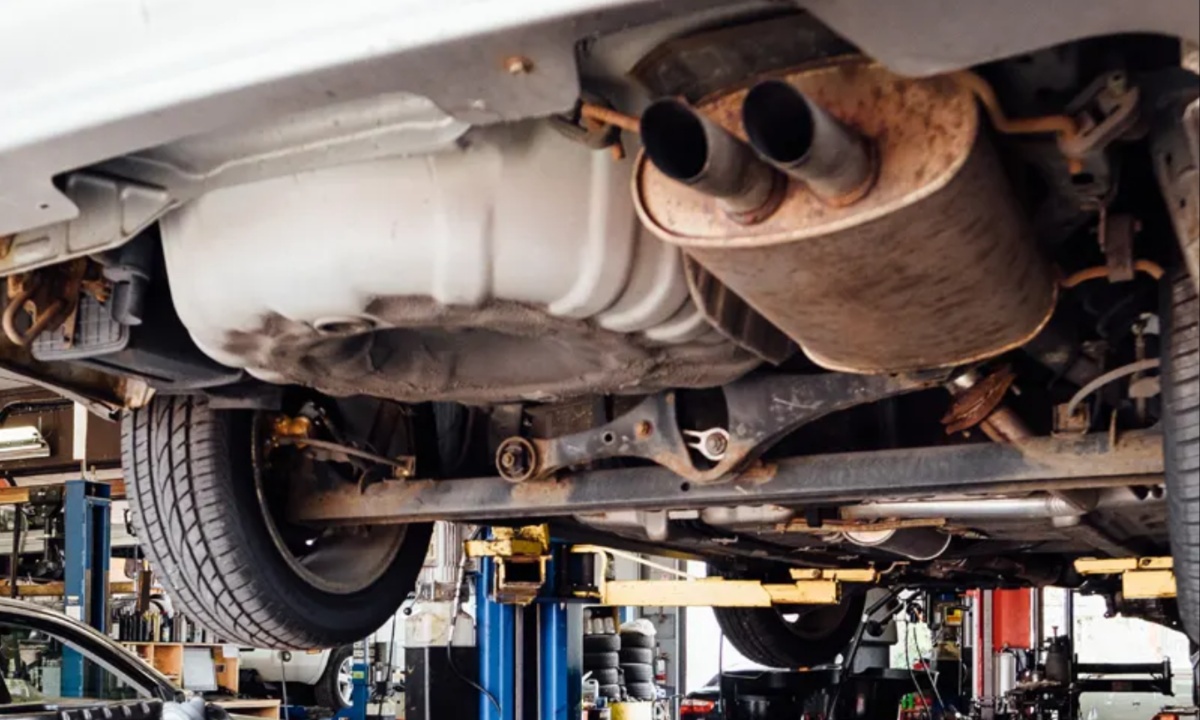Your vehicle’s exhaust system plays a critical role in ensuring smooth performance, optimal fuel efficiency, and minimal environmental impact. However, issues with the exhaust can arise, and it’s essential to recognize the signs early to address problems effectively. This guide will help you identify potential exhaust problems, understand common causes, and know how to maintain your exhaust system to avoid costly repairs.
Recognizing Signs of Exhaust Problems
Detecting exhaust problems early can save you time and money. Pay attention to these common warning signs that might indicate an issue:
Check Engine Light: An illuminated warning light can signify various engine or exhaust-related problems.
Reduced Vehicle Performance: Difficulty accelerating or a lack of power can point to exhaust system inefficiencies.
Vibrating Steering Wheel: Vibrations while driving may stem from exhaust alignment issues or leaks.
Discoloration on Exhaust Tips: Changes in color, such as black soot or a burnt appearance, might indicate a problem.
Unusual Noises: Rattling, hissing, rumbling, or chugging sounds can indicate specific exhaust issues.
Increased Engine Noise: A louder-than-usual engine may suggest exhaust leaks or muffler damage.
Excessive or Odd-Smelling Smoke: Visible smoke or unusual odors often point to internal malfunctions.
Decreased Fuel Economy: More frequent trips to the pump could mean your exhaust is not functioning efficiently.
If you experience any of these signs, consult a mechanic who can determine whether your exhaust requires repair or replacement.

Causes of Exhaust Smoke
Exhaust smoke can vary in color and thickness, each indicating specific issues:
White Smoke: Typically, white smoke is steam caused by condensation in the exhaust pipe. However, it could also signal coolant leaks, a failing head gasket, or a cracked engine block.
Black Smoke: Excessive fuel consumption is the usual culprit for black smoke. In petrol cars, issues with the air filter or fuel injectors are common causes. In diesel cars, a blocked diesel particulate filter (DPF) might be to blame. If the blockage isn’t severe, driving at motorway speeds can initiate a self-cleaning process for the DPF.
Blue Smoke: Dark grey or blue smoke indicates burning oil. This could result from worn-out components like the head gasket, piston rings, or valve stem seals. Burning oil in the combustion chamber can lead to engine misfires and increased shaking when the car is idle.
Grey Smoke: Thick grey smoke often stems from burning oil, much like blue smoke. It can damage the catalytic converter and reduce fuel economy. A faulty valve stem seal or piston ring is often the source of this problem.
It’s vital to address any visible smoke promptly by consulting a professional mechanic.
Addressing Smoke and Potential Fires
In extreme cases, smoke might result from a fire under the bonnet. Here’s how to respond:
- Turn off the engine immediately.
- Pull the bonnet release lever but do not prop it open.
- Evacuate all passengers and maintain a safe distance from the vehicle.
- Call emergency services for assistance.
Even if no fire is present, smoke without overheating can indicate coolant leaks, oil leaks, or faulty wiring. Regular servicing can help prevent such issues.
Common Causes of Exhaust Noise
A noisy exhaust often signals underlying problems. Different sounds can provide clues about the issue:
Hissing: A crack in the exhaust pipe, a leaking gasket, or a damaged manifold may cause this sound.
Roaring: This could indicate a problem with the car’s sound silencer.
Chugging: A blockage in the exhaust system might be responsible.
Rattling: Misalignment or loosened components can cause this noise.
Identifying where the sound originates can further pinpoint the issue:
Front of the Car: Problems such as a bad gasket, loose flexible pipe connections, or cracked exhaust manifolds are common.
Center of the Car: A loose connection, a hole in the exhaust pipe, or a malfunctioning catalytic converter may be the source.
Rear of the Car: These noises often involve the muffler or a hole in the exhaust system pipes.

The Role of a Car’s Exhaust System
The exhaust system is a vital component of your vehicle, performing several essential functions:
Noise Control: It reduces the sound produced by the engine.
Improved Engine Performance: A well-functioning exhaust helps optimize engine efficiency.
Enhanced Fuel Economy: It ensures the engine operates at peak efficiency.
Safe Emission Management: The exhaust channels harmful gases away from the vehicle and passengers.
Exhaust gases are collected from the cylinder head and diverted through the exhaust manifold. These gases then pass through the catalytic converter, where harmful substances are converted into inert gases. Before exiting via the tailpipe, the gases are further processed by a silencer or muffler.
Costs of Exhaust Repairs and Replacement
The price of repairing or replacing an exhaust system varies widely based on the vehicle and location. Here are some typical costs:
- Exhaust Repair: Up to £600.
- Exhaust Replacement: As much as £2,000.
Signs you may need a new exhaust include increased engine noise, visible corrosion, or decreased fuel efficiency. Regular servicing can help prevent the need for expensive replacements.
Importance of Emissions Testing in MOT
MOT testing includes an emissions test to ensure vehicles meet government pollution standards. Depending on the vehicle’s age, this test might involve visual inspections or metered smoke tests. Excessive emissions can result in an MOT failure. Regular servicing and prompt attention to exhaust issues can improve the likelihood of passing this test.
Preventing Exhaust System Problems
Preventative maintenance is the best way to avoid exhaust system issues. Consider these tips:
- Schedule annual exhaust system inspections.
- Perform regular car servicing to identify and resolve minor problems early.
- Address any unusual noises or visible smoke promptly to prevent further damage.
By staying vigilant and maintaining your car’s exhaust system, you can enjoy better performance, fuel efficiency, and safety on the road.

